Anna Braendle
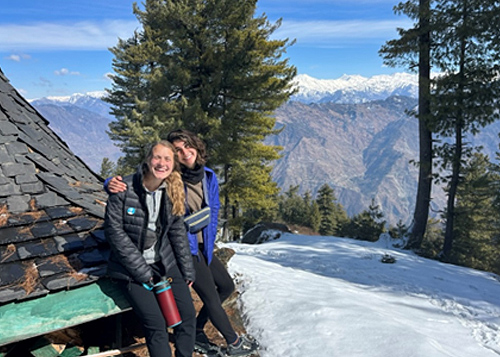 Views from 8,500 feet
Views from 8,500 feet
During my fourth year of medical school, I completed at a global health elective in India, specifically in the northern state of Himachal Pradesh, with the nonprofit organization Himalayan Health Exchange, which was started in 1996 by Ravi Singh, a native of Himachal Pradesh who is now based in the United States, in order to help provide basic medical care to underserved and remote communities in the Himalayas, including native Indians and Tibetan refugees living in monastic schools, orphanages and nunneries. Each year the organization leads four health expeditions through the region with the goal of providing health screening services including blood pressure, diabetes, vision changes and dermatological conditions, as well as general health counseling on hydration, sun protection, oral hygiene, diet and nutrition, reproduction and prevention of the infectious diseases found in the trans-Himalayan region.
In February, I partook in the four-week “outer Himalayas” expedition. Our group consisted of 16 fourth-year medical students from all around the country, two burn ICU nurses and three attending physicians who had spent large portions of their careers working with Indian Health Services on the Navajo Reservation in Arizona.

Group photo taken at Tibetan Children's Village
Our trip started with a flight from Delhi to Dharmsala, where we were picked up and driven to Bir, an internationally renowned paragliding destination at the base of the Himalayas. We spent 6 days in Bir running clinics at two Tibetan Children’s Villages, two small remote villages and a Buddhist monastery. The people were extremely welcoming, and the views were stunning.
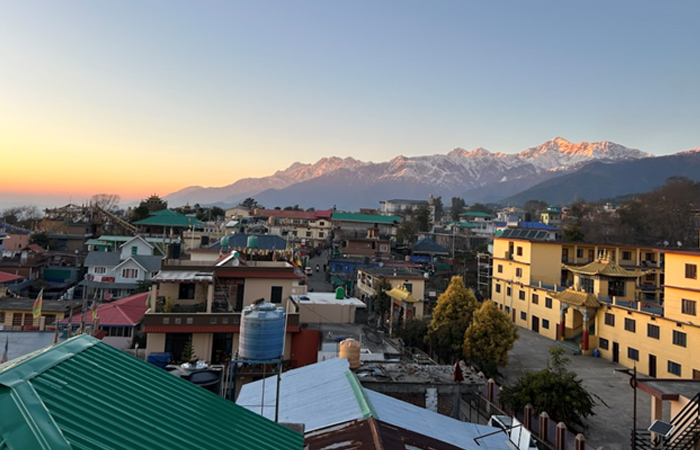
Views of Bir from our guest house
Each clinic day was structured similarly. The day started with a 1- to 2-mile hike to the clinic location, where we would set up the site. All the clinics were held outside under tents. We conducted clinic from 10 a.m. to 4 p.m. The organization’s hired drivers served as translators, and several of the older students from the Tibetan boarding schools were also able to assist with translation as they were fluent in both Hindi and English. Following clinic, we gathered for feedback and a student lecture on a topic specific to the Indian and Tibetan population in Himachal Pradesh. My presentation focused on leprosy.
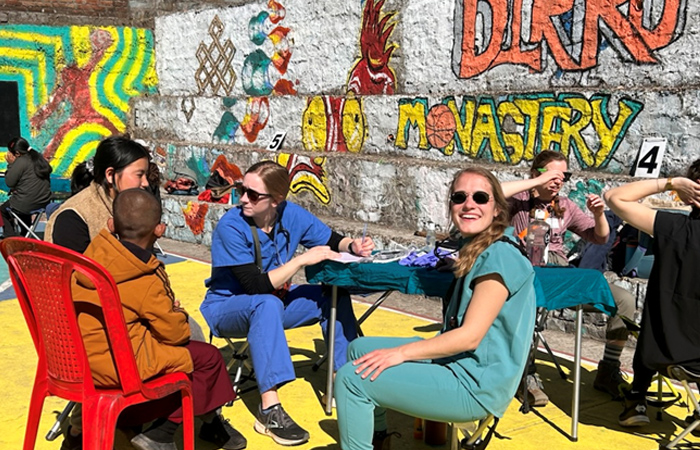
Patient interview at a Buddhist monastery
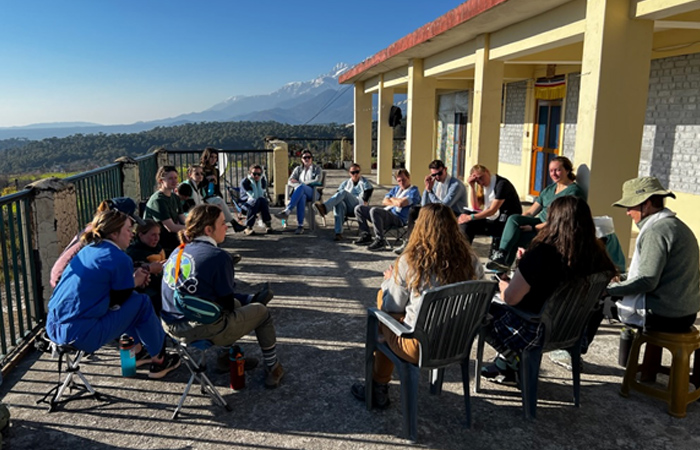
Student presentation after clinic
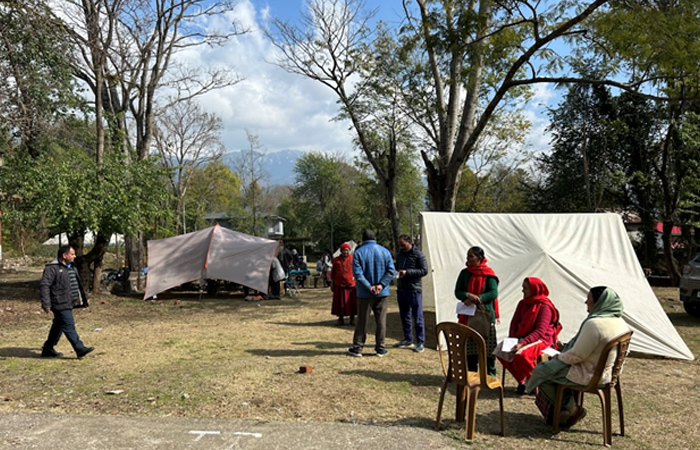
Patients waiting to be seen at the village clinic
The Himalayan Health Exchange works together with local Indian providers. For patients that were identified as having conditions that required further testing or management, we referred them to local community health centers, run by the Department of Health. We were able to provide the patients with documentation of their visit with us and indicate our concerns to the local providers. One of the highlights of our time in Bir was being able to meet one of the providers who works closely with the Himalayan Health Exchange organization and runs the Bir Community Health Center, Dr. Raj. We toured the Bir Community Health Center, which includes six inpatient beds, and gained insight into the Indian public health system.
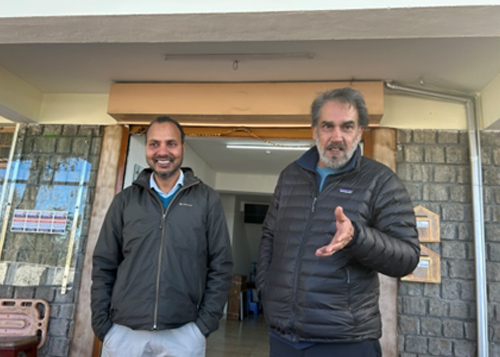
Dr. Raj and Ravi Singh, the founder of the Himalayan Health Exchange
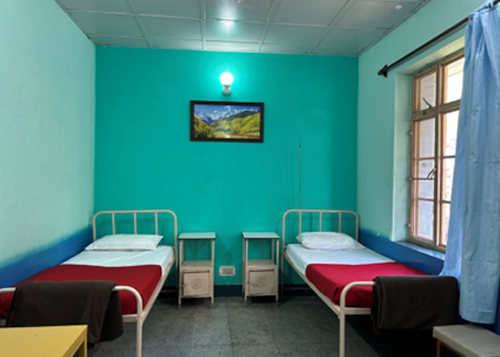
Community health clinic inpatient room
Following our time in Bir, we headed up to Bilaspur, higher in the Himalayas. We camped for three nights despite the subfreezing temperatures. We held two clinics in remote villages, where we saw about 150 patients each day. Many of the patients had undiagnosed hypertension, contact dermatitis and joint complaints relating to labor-intensive jobs.

Views from the hike down to the camp site
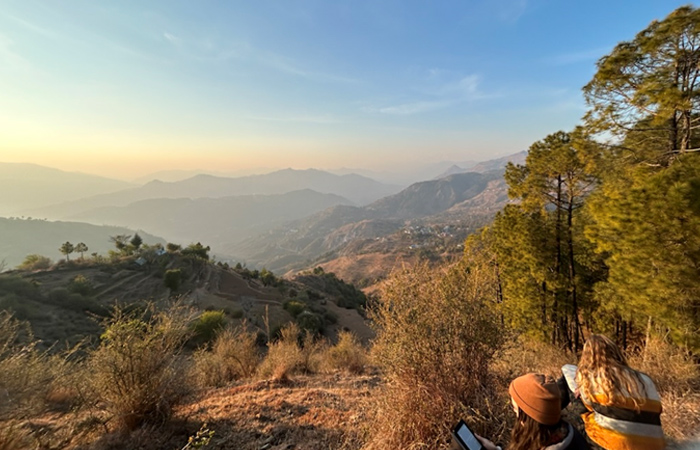
Views from the campsite
After camping, we drove into the Beas River Valley and stayed at a Buddhist monastery in Bhuntar for several nights. This was one of the highlights of the trip as we were able to learn about the history of Tibet and the influences of Tibetan culture and Buddhism on northern India. The Tibetan New Year is celebrated in February; 2024 is the year of the Wood Dragon – a time of adaptability and transformation. We were able to better understand life at a monastery and the process of becoming a monk/nun, which often starts around 5 years of age. We held clinics at a Buddhist monastery, a Buddhist nunnery and a remote village, where saw many conditions related to living in crowded spaces such as tinea capitis, scabies and viral upper respiratory tract infections.
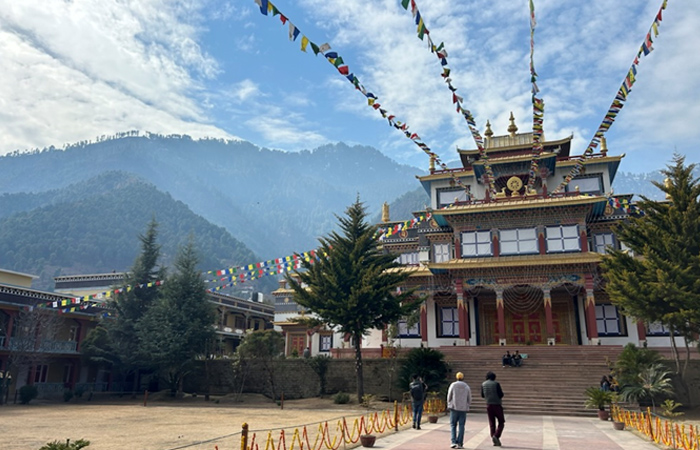
Buddhist monastery in Bhuntar
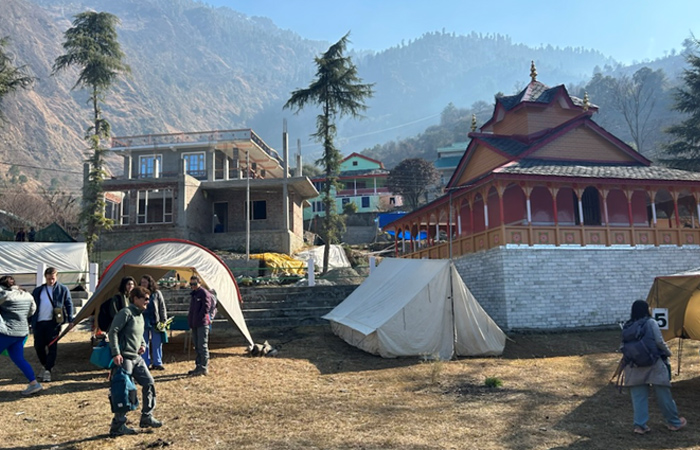
Clinic in mountain village near Bhuntar
Next we headed up the valley to Kullu, where we stayed in a guest house. In the afternoons, we made friends with the local village dogs and enjoyed afternoons by the fire. We held three more clinics. At one of the clinics in the village by our guest house, one of the patients brought films of his most recent chest CT. We were able to help him better understand his recent diagnosis of adenocarcinoma of the lung. The locals were grateful for our presence and care, and concluded one of our clinic days with a performance of “Dalai Lama Song.”
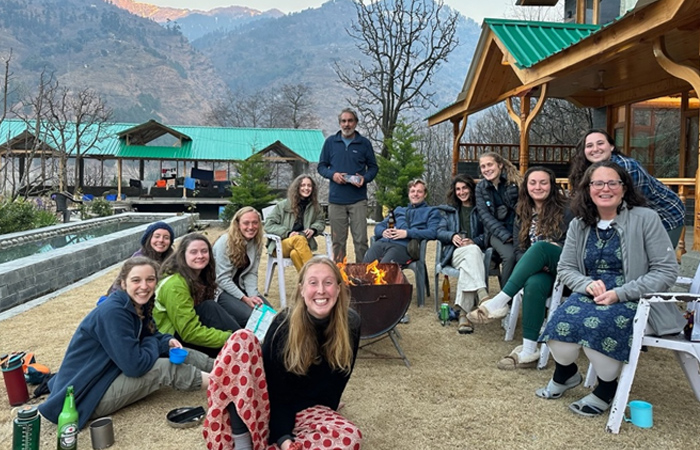
Spending the afternoon by the fire
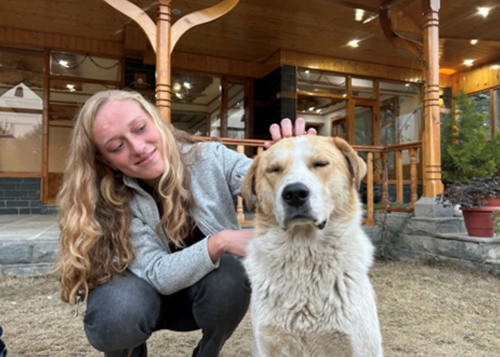
Making friends with the local dogs

Reading CT films outside
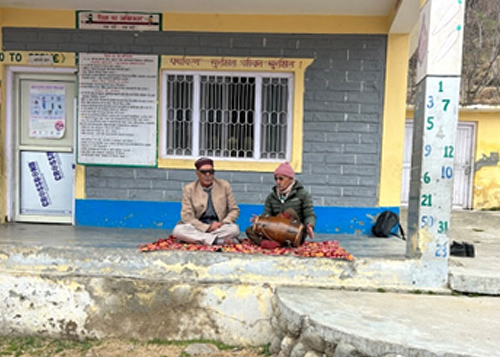
Performance of the Dalai Lama Song
Our last clinic in Kullu was held at a Tibetan boarding school, the Himalayan Cultural School, where we saw a total of 350 students in one day! Our aim was to address any concerns and screen for vision and dermatological conditions, self-harm, and phimosis in male students specifically. Across India, there are several free Tibetan boarding schools, funded by nonprofits and started by the Dalai Lama (and then run by his sisters). The schools are for Tibetan children living in exile. Many of the students are orphans, and the families of many others remain in Tibet. At these schools, the children are able to learn freely about Tibetan culture and Buddhism, and receive a quality modern education.
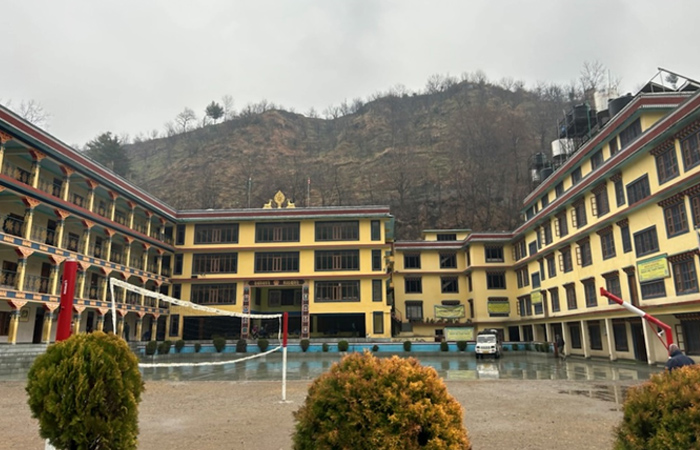
The Himalayan Cultural School
After our time in Kullu, we headed back into the steep hillsides of the Himalayas for our final leg of the journey to Panjain. Here we hosted four more clinic days for remote villages. Panjain is located more than 50 kilometers from the nearest hospital. We set up camp at 6,500 feet for five days. Because of rain and snow, we moved into a guest room adjacent to the campsite to stay dry and warm around the only electric space heater. On our final day, we hiked to more than 8,500 feet to reflect on our time in Himachal Pradesh and take in the breathtaking views of the Himalayas one last time before the 17-hour flight home.

More views from 8,500 feet
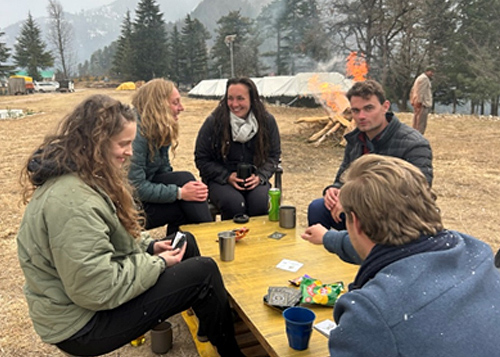
Playing cards in the snow after clinic
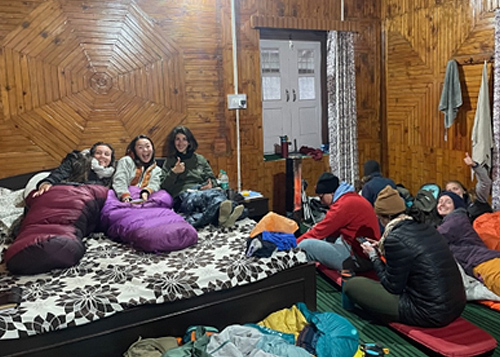
Huddling around the electric space heater
Over the course of our 28-day trip, we saw 1,500 patients, many with common conditions like hypertension, diabetes, osteoarthritis and COPD. However, we also gained insight into how to diagnose and treat conditions that are uncommon in the United States like tuberculosis, rheumatic heart disease, severe contact dermatitis and pterygiums. In a clinical practice environment where we did not have access to laboratory testing or diagnostic imaging, we were required to trust our physical exam skills. We learned how to distinguish benign versus malignant and emergent versus non-emergent conditions, a skill essential in a resource-limited environment. Additionally, we were challenged to adapt to a foreign culture and to communicate empathy without speaking the same language as most of our patients.